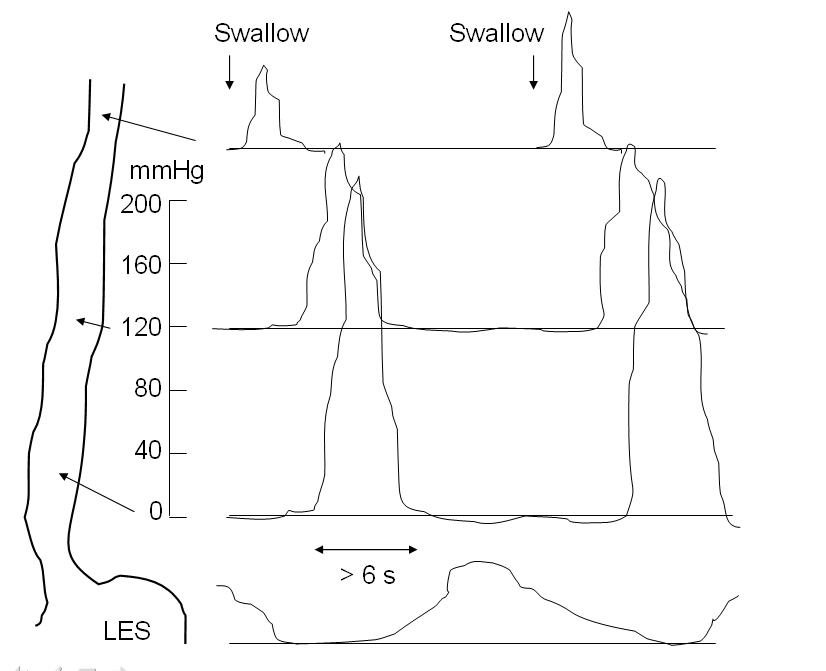Esophageal motility study: Difference between revisions
No edit summary |
m (Bot: Automated text replacement (-{{SIB}} + & -{{EJ}} + & -{{EH}} + & -{{Editor Join}} + & -{{Editor Help}} +)) |
||
| Line 2: | Line 2: | ||
{{SI}} | {{SI}} | ||
==Overview== | ==Overview== | ||
An '''esophageal motility study''' (EMS) or '''esophageal manometry''' is a study performed to evaluate the pressure of the [[esophagus]] in various stages along its length. | An '''esophageal motility study''' (EMS) or '''esophageal manometry''' is a study performed to evaluate the pressure of the [[esophagus]] in various stages along its length. | ||
| Line 16: | Line 16: | ||
[[Category:Medical tests]] | [[Category:Medical tests]] | ||
Latest revision as of 02:23, 9 August 2012

Overview
An esophageal motility study (EMS) or esophageal manometry is a study performed to evaluate the pressure of the esophagus in various stages along its length.
Indications
An EMS is typically done to evaluate suspected disorders of motility or peristalsis of the esophagus. These include achalasia, diffuse esophageal spasm, nutcracker esophagus and hypertensive lower esophageal sphincter. These disorders typically present with dysphagia, or difficulty swallowing, usually to both solids and liquids even initially. Other patients with spasm disorders may have the test done to diagnose chest pain thought not to be of cardiac cause. The test is not useful for anatomical disorders of the esophagus (that is, disorders that distort the anatomy of the esophagus), such as peptic strictures and esophageal cancer.
Procedure
A technician places a catheter into the nose and guides it into the stomach. Once placed, the catheter is slowly withdrawn, allowing it to detect pressure changes and to record information for later review. The patient will be asked at various times to take a deep breath or to take some swallows of water. The degree of discomfort varies among patients. Patients are not sedated because sedatives would alter the functioning of the esophageal muscles. Overall the procedure takes about 45 minutes. After the procedure is complete, patients can usually resume their normal daily activities.